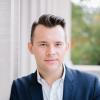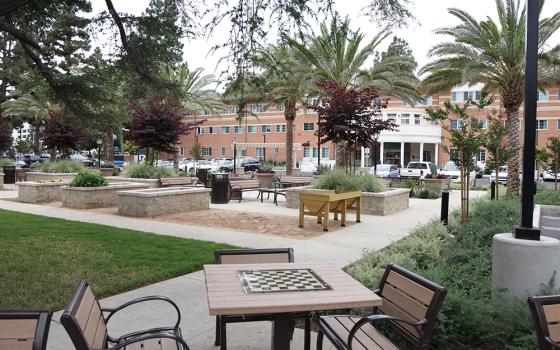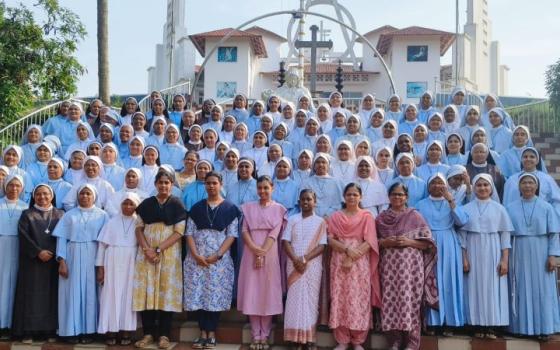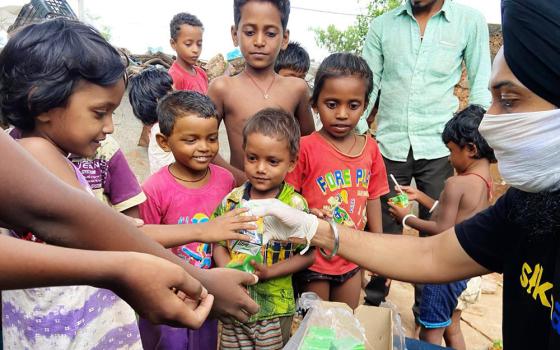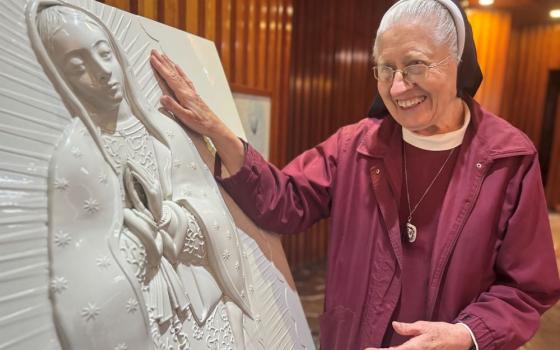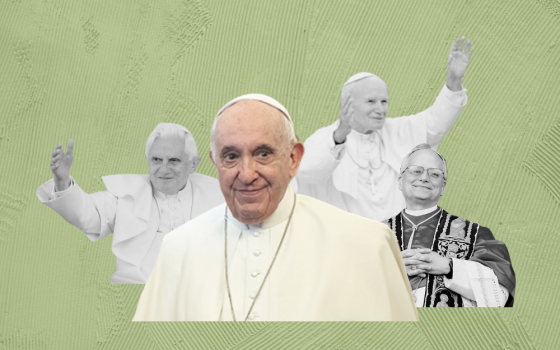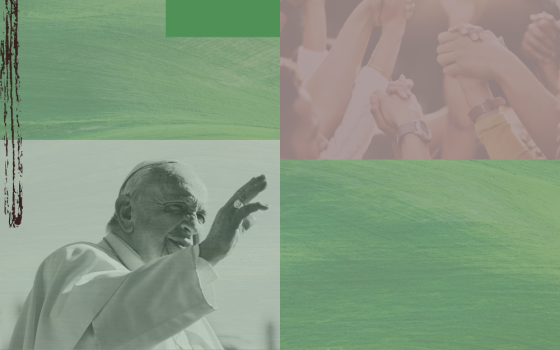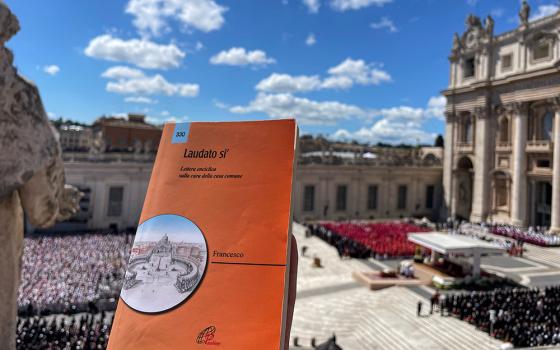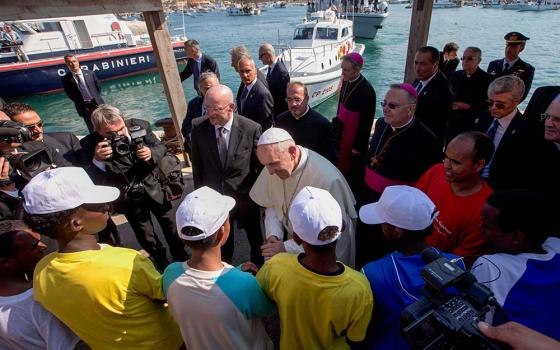More than 250,000 people gathered in St. Peter's Square and Vatican City today (April 26) to pay tribute to Pope Francis, the charismatic leader of the Catholic Church who electrified the globe with his message of hope, mercy and love for even the most marginalized and outcast.
Traveling from around the world, from monarchs to the poor, another 150,000 people gathered along the route from St Peter's to Santa Maria Maggiore, Francis' final resting place, on a mild and sunny day to attend the funeral of the 88-year-old pontiff who died Monday.
Dozens of heads of state and 10 reigning sovereigns, including those on far extremes of the political spectrum, attended the funeral. U.S. President Donald Trump and First Lady Melania Trump were there, as were former President Joe Biden and former First Lady Jill Biden.
Before the funeral, Trump and President Volodymyr Zelenskyy of Ukraine met privately and had a productive exchange, according to a statement to the media from Steven Cheung, the White House communications director. Cheung said more details would be released later. Photos showed them seated on chairs facing one another in a marbled room and hunched over.
The crowd in St. Peter's Square erupted into applause as the pope’s coffin made its way from the basilica into the piazza at the start of the Mass.
"Evangelization was the guiding principle of his pontificate. With a clear missionary vision, he spread the joy of the Gospel," Cardinal Giovanni Battista Re said during his funeral homily.
"The guiding thread of his mission was also the conviction that the church is a home for all, a home with its doors always open," he continued, reading from prepared text. "A church determined to take care of the problems of people and the great anxieties that tear the contemporary world apart; a church capable of bending down to every person, regardless of their beliefs or condition, and healing their wounds."
Re, the 91-year-old dean of the College of Cardinals, presided over the Mass, which began at 10 a.m. local time. Re will play a critical role in organizing the upcoming conclave, but under church law will not be able to participate in it since he is over age 80.
Francis, who died on Easter Monday (April 21), following a monthslong respiratory illness, last appeared in St. Peter's Square on Easter Sunday. Despite a recent five-week hospitalization for double pneumonia, he not only appeared on the loggia of St. Peter's Basilica to impart the traditional Easter blessing, but also made what would be his farewell tour on the popemobile through St. Peter's Square.
Francis, Re said, was always "close to his flock, the church of God, mindful of the words of Jesus quoted by the Apostle Paul: 'It is more blessed to give than to receive.'"
During his homily, Cardinal Re paid tribute to some of the major themes of Francis' 12-year papacy, including concern for migrants and refugees, the environment, interreligious dialogue, his outreach to society's most forgotten and the pope's command to "build bridges, not walls."
"He established direct contact with individuals and peoples, eager to be close to everyone, with a marked attention to those in difficulty, giving himself without measure, especially to the marginalized, the least among us," Re said. "He was a pope among the people, with an open heart towards everyone."
U.S. President Donald Trump and First Lady Melania Trump before Pope Francis' funeral Mass in St. Peter's Square at the Vatican on April 26. Trump met briefly with Ukrainian President Volodymyr Zelenskyy before the funeral, the White House said. (OSV News/Reuters/Kai Pfaffenbach)
And those people whose lives he touched were out in full force on Saturday.
From the moment St. Peter's Square opened at 6 a.m. local time, pilgrims poured in from every corner of the globe. Schoolchildren wearing backpacks arrived alongside the elderly using walking canes.
Some 250,000 pilgrims paid their respects to the pontiff while he lay in state in St. Peter's Basilica over the last three days.
The Chafla family, of Ecuador, had been traveling through France when they learned of Francis’ death and decided to head for Rome. With little money, the family of nine camped on the outskirts of the Basilica of Saint Mary Major, where the pope will be entombed. Hauling backpacks, they kept vigil outside all night.
“We wanted to give him a last goodbye,” said Alexanda Chafla. Said Jose Luis Alargon, who was traveling with the family: “He was a pope of the people. He didn’t like riches.“
“I decided just like that, at the last hour to come to pope’s funeral,” said Los Angeles resident Evelia González, who was on vacation in Texas when she heard the news that Francis died. “But it was worth it. He was a brother to all.”
Former U.S. President Joe Biden and former first lady Jill Biden in St. Peter's Square before Pope Francis' funeral on April 26. Biden was the second Catholic president of the United States. (OSV News/Reuters photo/Kai Pfaffenbach)
Liturgical scholar Rita Ferrone said before the funeral that the readings chosen for Francis' funeral spoke "eloquently of the life that he led and the ministry he exercised.”
The Gospel reading (John 21:15-19) recounts Jesus telling Peter — whom, according to Catholic tradition, was the first pope — that if he loved him, "feed my sheep."
Those words, Ferrone said, "could not be more appropriate."
"The way Francis exercised the Petrine ministry truly fed Christ's flock daily, and he did it out of love," she said.
The readings selected for Francis' funeral were also the same used for Pope John Paul II's in 2005, said Miles Pattenden, a scholar of the papacy at Oxford University.
Though the readings were for two different popes of different eras, "they actually underscore the desire for continuity," Pattenden said, even if some of the liturgical language has been simplified to strip the liturgy of the formal titles that have historically been used for popes.
The rites offered a fitting farewell for a pontiff who just three days after his surprise election expressed his desire for "a church that is poor and for the poor," radically reorienting the Catholic Church and its priorities.
According to his own wishes, Francis was buried in a simple wooden coffin, rather than the three elaborate coffins that have been used for recent popes.
When his body reached Santa Maria Maggiore — a papal basilica 3 miles from the Vatican — it was greeted not by Italian dignitaries but by the poor of Rome.
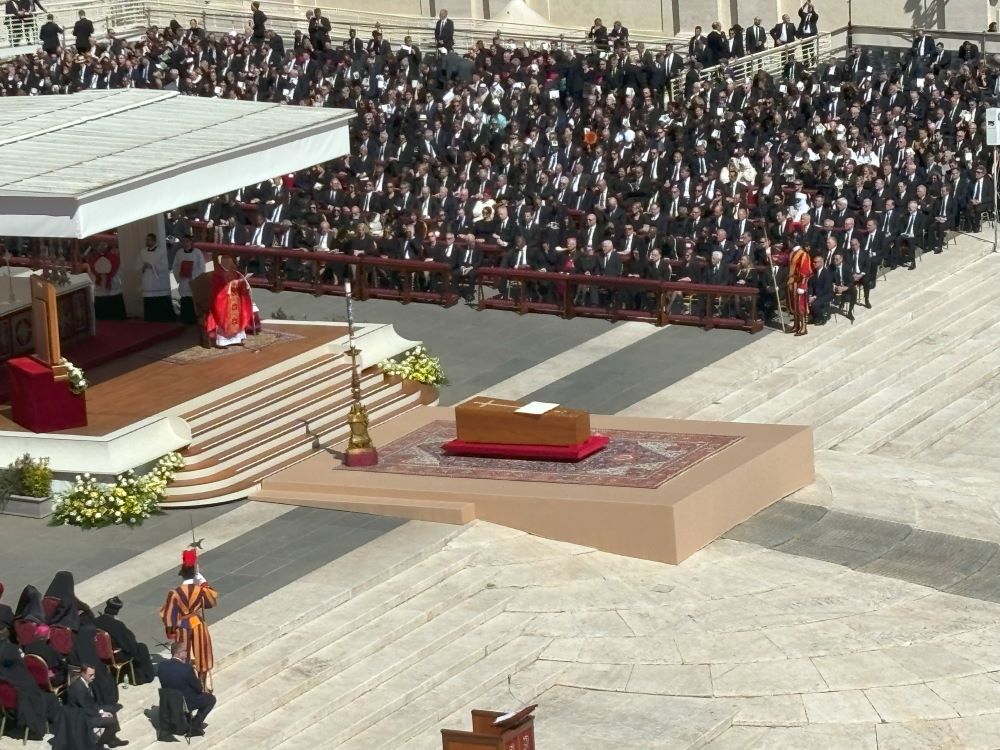
Some 250,000 people attended Pope Francis' funeral Mass in St. Peter's Square on April 26. He was buried in Santa Maria Maggiore, a papal basilica about 5 kilometers away. (NCR photo/Olivia Bardo)
When Brazilian Cardinal Cláudio Hummes turned to then-Cardinal Jorge Mario Berglio upon his election and told him not to forget the poor, the newly elected pope went on to take the name of the 13th-century St. Francis who eschewed wealth and power. Over visits to 65 countries and some 2,500 speeches and homilies, the poor remained his focus.
And on the steps of his most beloved religious site were the "least of these" that Francis had prioritized during his 12 years in office.
Among the crowd were migrants, harkening back to his first trip outside Rome after his election to the Italian island of Lampedusa. There he called attention to what he described as the "global indifference" to the number of migrants lost at sea.
Also present were transgender people, representing the sea change during his papacy, starting with his unforgettable 2013 comment, "Who am I to judge?" when asked about gay priests. In recent years, he met in unadvertised monthly meetings with transgender people and sex workers from outside Rome.
Francis visited Santa Maria Maggiore more than 120 times as pope, including before and after each international trip and following his hospitalizations to pray in front of his favorite icon of the Blessed Virgin Mary.
On a simple marble slab in a space that used to be a storage closet is written in Latin, "Franciscus."
Christopher Bellitto, a church historian at Kean University in New Jersey, said that if the pope was going to be buried outside the Vatican, he would have thought Francis would have chosen St. John Lateran, since he's bishop of Rome and that's the seat of the bishop of Rome.
"It's clear, however, that his particular devotion to Mary and that image of hers won out," Bellitto said. "She is his Beatrice."
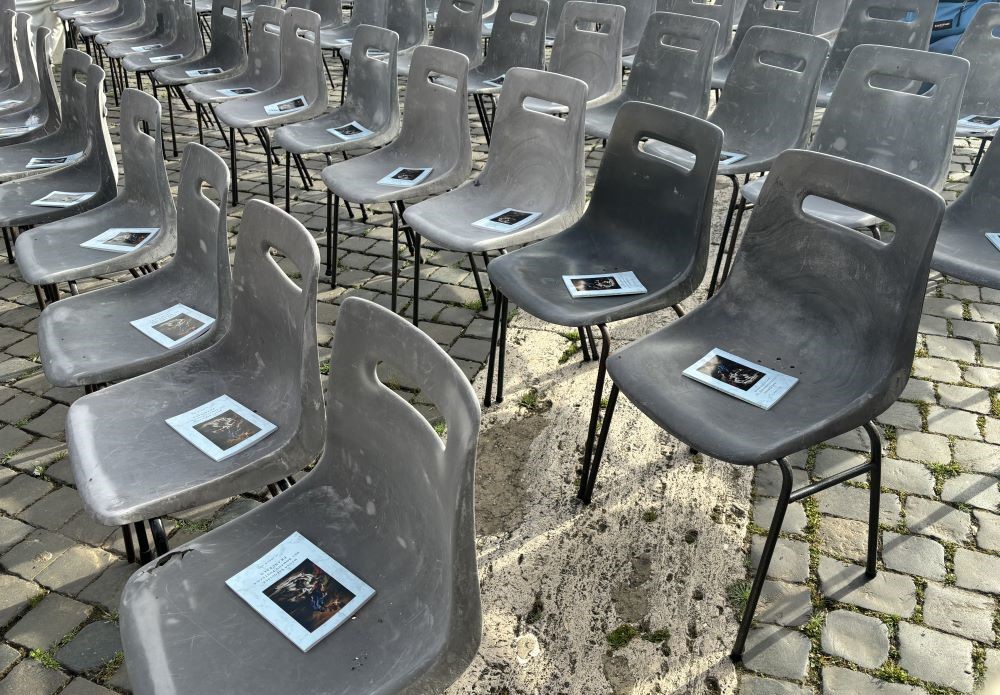
Empty seats in St. Peter's Square before Pope Francis' funeral on Saturday, April 26. (NCR photo/Olivia Bardo)
Mourners included Brazil's Luiz Inácio Lula da Silva (or "Lula" as he is also known) who is among Latin America's most progressive leaders, and the right-wing President Javier Milei of Argentina, who went from calling Francis an "imbecile" on the campaign trail to embracing him at the Vatican and inviting him to visit his homeland.
The diverse mourners highlighted both the convening power of the Vatican and the outsized role of the papacy, but also of the complicated geopolitical realities that this peace-loving pope leaves behind with the world at war.
Advertisement
While Re is not a cardinal elector, his words as dean of the College of Cardinals will be closely scrutinized for any indication of what direction he might like to see the church head in the coming conclave.
Francis, said Re, was a pope "attentive to the signs of the times and what the Holy Spirit was awakening in the church."
His homily offered a ringing endorsement of the Catholic Church’s priorities under Francis and was matched by enthusiasm by the thousands who frequently interrupted his words with their applause.
As he concluded his homily, Re reminded the Massgoers that Francis frequently concluded his speeches and meetings by saying "Do not forget to pray for me."
"Dear Pope Francis, we now ask you to pray for us," he said. "May you bless the church, bless Rome, and bless the whole world from heaven as you did last Sunday from the balcony of this Basilica in a final embrace with all the people of God, but also embrace humanity that seeks the truth with a sincere heart and holds high the torch of hope."
Following the funeral, the pope's body departed the Vatican on a 4-mile trek through the city of Rome.
The motorcade took a cinematic journey, passing some of the world's most iconic landmarks, including the Colosseum and the Roman Forum. During the 30-minute journey across the city, an estimated 150,000 people — shop keepers, tourists, and ordinary Romans — turned out to clap, cheer and bid farewell.
Among the most poignant moments was when Francis' body, history's first Jesuit pope, passed by the Gesu, the mother church of the Society of Jesus, or the Jesuit Order, and the burial place of St. Ignatius Loyola.
The procession also reflected the Jesuit pope's simple style and his namesake, Francis of Assisi, the patron saint of the poor. Francis’ wooden coffin traveled through the Eternal City on a popemobile — a retrofitted pickup truck — that was used during one of his international trips.
Camillo Barone, Soli Salgado and Olivia Bardo in Rome contributed to this report. It was edited by James V. Grimaldi in Rome and Renée K. Gadoua in Syracuse, New York. The National Catholic Reporter's Rome Bureau is made possible in part by the generosity of Joan and Bob McGrath.
